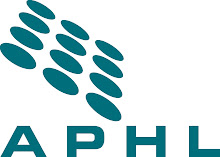By Tony Barkey, Senior Specialist, Public Health Preparedness and Response, APHL
As was reported, states continue to make progress implementing Continuity of Operations Plans (COOP). COOP ensures that vital public institutions, like public health laboratories, continue to function during and after an emergency. Today’s changing threat environment and recent emergencies, including localized acts of nature, accidents, technological emergencies and terrorist attacks, have increased the need for COOP capabilities and plans. All 50 states and DC either have a laboratory- specific COOP, are part of their state’s COOP or are in the process of developing their own plan. As we saw during the novel influenza A H1N1 outbreak, having these preparedness plans in place enabled the quick response that was seen.
The report also revealed that 49 out of 50 states and DC conducted exercises to assess the competency of sentinel clinical laboratories within their state to rule out potential bioterrorism agents. This demonstrates the outreach from the LRN reference laboratories, funded via the CDC Public Health Emergency Preparedness Cooperative Agreement, to their partners who are often on the front line receiving samples during an emergency.
These positive results come at a time when many states are experiencing difficulties maintaining the workforce necessary for an effective response. 41% faced hiring difficulties and 28% faced retention issues. For those that reported hiring difficulties, 36% identified a lack of funding as a primary reason and another 31% reported hiring freezes.
APHL staff and members played a prominent role in the publication by providing laboratory- and state- specific data to the report. APHL’s data points, collected from the annual All-Hazards Laboratory Preparedness Survey, were used to describe issues such as workforce shortages, continuity of operations, sentinel clinical outreach and training, emergency communication, and general laboratory testing capability. If you are interested in finding out more, the report can be found here.





No comments:
Post a Comment